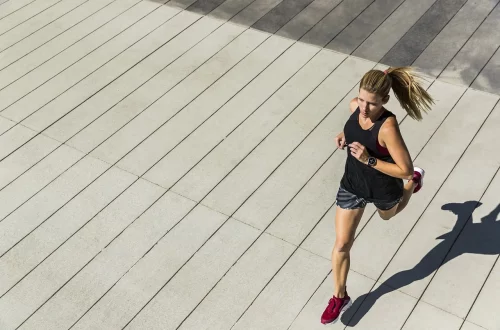
Understanding CCL Surgery in Dogs: What Every Pet Owner Should Know
Understanding the health and wellbeing of our canine companions is a top priority for pet owners. One of the common issues that can arise in dogs is a cruciate ligament tear, which can lead to significant pain and mobility issues. The cranial cruciate ligament (CCL) plays a crucial role in maintaining the stability of the knee joint, and when it becomes damaged, it can result in a range of complications.
CCL injuries can affect dogs of all ages and breeds, often leading to a series of symptoms that can be distressing for both the pet and the owner. Understanding the implications of such an injury is essential for timely intervention and treatment. Surgical options, particularly CCL surgery, have gained importance in veterinary medicine as a means to restore function and alleviate pain.
Pet owners must recognize the signs of a CCL injury, which may include limping, reluctance to engage in physical activity, and swelling around the knee. Early diagnosis and treatment are key to ensuring that dogs can return to their normal activities as quickly as possible. This article aims to provide valuable insights into CCL surgery in dogs, outlining what pet owners should know to make informed decisions about their furry friends’ health.
Signs and Symptoms of CCL Injuries in Dogs
Identifying the signs and symptoms of a CCL injury is the first step in seeking appropriate treatment for your dog. Dogs may exhibit a variety of behaviors that can indicate a problem with their knee joint. One of the earliest signs is a noticeable change in their gait. You might observe your dog limping or favoring one leg over the other when walking or running. This limping may become more pronounced after physical activity, especially after a long walk or play session.
Another common symptom is a reluctance to engage in activities that they previously enjoyed. For instance, your dog may hesitate to jump, run, or climb stairs. This change in behavior can be concerning, as it often indicates that your dog is experiencing discomfort or pain. Additionally, you might notice swelling around the knee joint, which can be an indicator of inflammation or injury.
Sometimes, dogs will display other behaviors, such as excessive licking of the affected area or a reluctance to put weight on the injured leg. If you observe any of these symptoms, it’s crucial to consult your veterinarian. They can perform a thorough examination and may recommend imaging tests, such as X-rays, to assess the condition of the knee joint and confirm a CCL injury.
Understanding these signs can help you take timely action, potentially preventing further damage and ensuring a smoother recovery process for your dog. Early intervention is key, as untreated CCL injuries can lead to chronic pain and long-term mobility issues. Therefore, being vigilant and responsive to your dog’s behavior is vital for maintaining their quality of life.
Understanding the Surgical Options for CCL Repairs
When conservative treatments fail to alleviate the symptoms of a CCL injury, surgical intervention may become necessary. There are several surgical options available, each designed to restore stability to the knee joint and alleviate pain. The most common surgical procedures for CCL repair include the Tibial Plateau Leveling Osteotomy (TPLO) and the Tibial Tuberosity Advancement (TTA).
The TPLO procedure involves altering the angle of the tibial plateau to prevent the femur from sliding backward in relation to the tibia during movement. This method has gained popularity due to its effectiveness in restoring stability and function. Most dogs experience a significant reduction in pain after surgery and can return to their normal activities with proper rehabilitation.
On the other hand, the TTA procedure focuses on advancing the tibial tuberosity to change the mechanics of the stifle joint. This surgery is particularly suitable for dogs with specific anatomical considerations and can also lead to excellent outcomes. Both surgical options have their advantages and potential drawbacks, which your veterinarian can help you navigate.
It’s essential to have an in-depth discussion with your veterinarian about the best surgical option for your dog. They will consider various factors, including your dog’s age, weight, activity level, and overall health, to recommend the most appropriate procedure. The goal of these surgeries is not only to repair the damaged ligament but also to promote long-term joint health and mobility.
In addition to the surgical procedure itself, post-operative care is crucial for a successful recovery. This may involve physical therapy, restricted activity, and medication to manage pain and inflammation. Following your veterinarian’s guidelines during the recovery phase will significantly impact your dog’s healing process and help them regain their strength and mobility.
Recovery and Rehabilitation After CCL Surgery
Recovery after CCL surgery is a critical phase that requires careful attention and commitment from pet owners. The healing process can be lengthy, often taking several months, and involves multiple stages. Initially, your dog will need to rest and limit their activity to prevent any strain on the healing joint. This may involve using a crate or a confined space to restrict movement during the early recovery period.
Pain management is a vital component of the recovery process. Your veterinarian will likely prescribe pain relief medication to keep your dog comfortable. It’s important to follow their dosage recommendations closely and monitor your dog for any signs of discomfort or adverse reactions to the medication.
As your dog begins to heal, your veterinarian may recommend a gradual increase in activity levels. This typically starts with short, controlled leash walks. Gradual reintroduction to normal activities is essential to ensure that the knee joint adjusts properly to the changes made during surgery. Over time, your dog will be able to engage in more vigorous activities, but this should always be done under the guidance of your veterinarian.
Physical rehabilitation can also play a significant role in the recovery process. Many veterinarians recommend working with a certified canine rehabilitation therapist to develop a tailored exercise plan. This may include range-of-motion exercises, strengthening routines, and hydrotherapy, which can help improve mobility while minimizing stress on the knee.
Monitoring your dog’s progress throughout the recovery process is crucial. Regular follow-up appointments with your veterinarian will help track healing and make any necessary adjustments to the rehabilitation plan. By committing to a structured recovery program, you can help your dog regain their mobility and return to their active lifestyle.
**Disclaimer:** This article is not intended to provide medical advice. Always consult with a qualified veterinarian for any health concerns regarding your pet.




